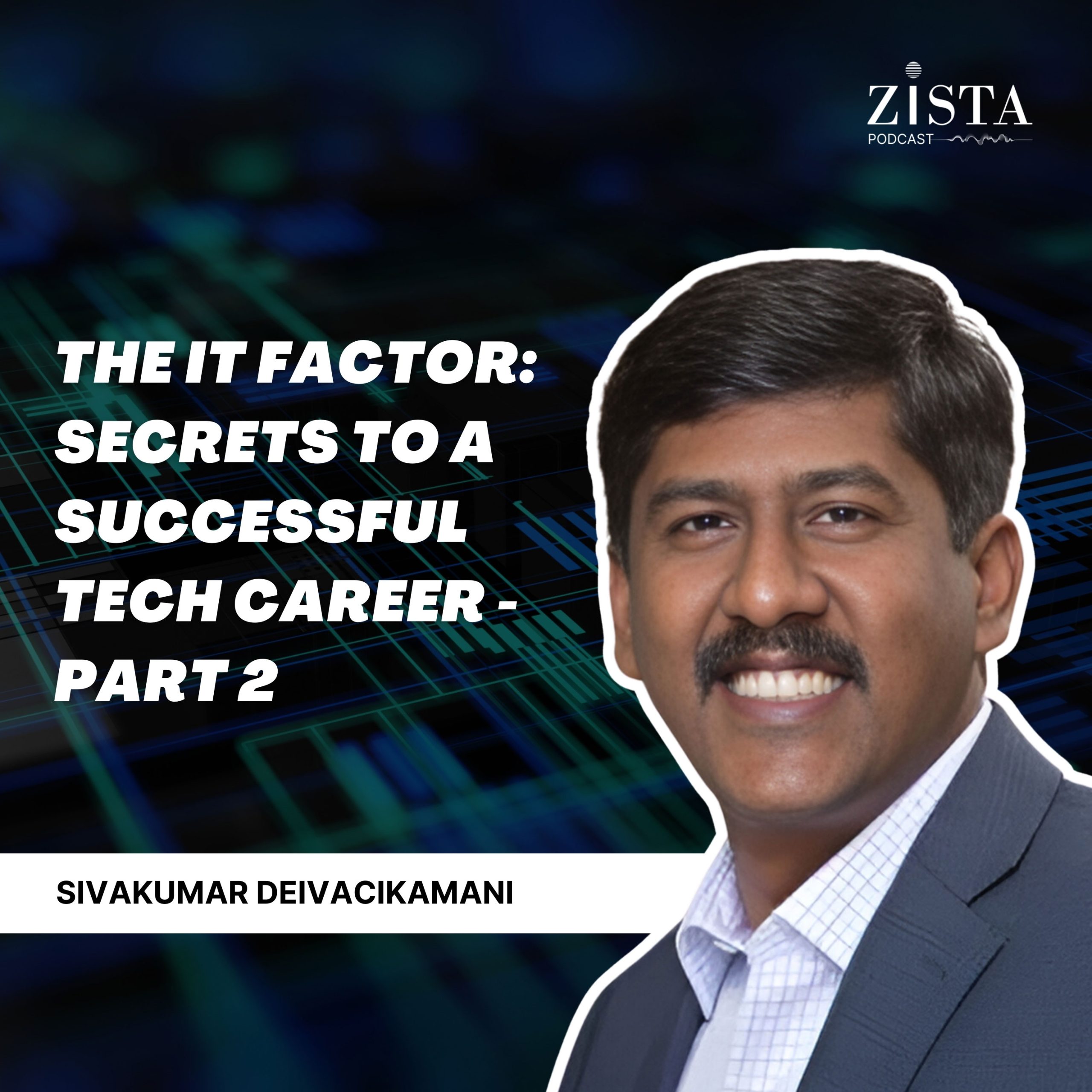Developing a beverage brand in 2024
Welcome to the very first episode of Season 2 of The Zista Podcast. This episode focuses on the innovative world of beverage branding in 2024. Our guest, Suramya Kedia, VP of Brand and Strategic Growth at Great Galleon Ventures Limited, shares her journey with the recently launched RTD brand, Rascal. Suramya’s experience in the industry offers unique insights into the challenges and triumphs of brand development.
This episode is a deep dive into the factors that drive success in the beverage industry. Suramya discusses the importance of aligning passion with strategy and the role education plays in shaping your business mindset. Her firsthand experiences, particularly with Rascal, shed light on understanding and navigating current market trends. Ideal for entrepreneurs, marketers, and anyone curious about brand building, this conversation is packed with valuable lessons and inspiring stories.
Tune in for an engaging session that’s both informative and motivational, perfect for anyone looking to make their mark in the beverage industry.
Welcome to the first episode of Season 2 of The Zista Podcast, where we’re exploring the exciting world of beverage branding in 2024. Our special guest today is Suramya Kedia, the innovative mind behind the newly launched RTD brand, Rascal. As the VP of Brand and Strategic Growth at Great Galleon Ventures Limited, Suramya brings a wealth of experience and insights to the table.
Suramya shares her journey into the world of beverage brand development, revealing the passion and strategic thinking behind her career choices. Her insights provide a glimpse into what motivates a successful professional in this dynamic industry. We also discuss how Suramya’s educational experiences have shaped her approach to business, offering listeners a chance to see how learning and professional growth go hand in hand.
We then navigate through the current trends and challenges in the beverage sector. Suramya’s expertise in this area shines through as she outlines the complexities of the market. The story behind Rascal’s inception goes beyond just launching a new product; it’s a testament to innovative thinking and understanding consumer needs in today’s market.
Wrapping up, we explore Suramya’s role in shaping the future of Great Galleon Ventures Ltd. Her approach to brand management and development offers valuable lessons for anyone looking to make a mark in the industry.
Tune in for an insightful conversation that blends practical advice with strategic insights, perfect for anyone eager to understand the nuances of the beverage industry in 2024.
KEY TAKEAWAYS
- Pay attention to changing market trends, such as demographic shifts in consumer habits, to identify new opportunities in the beverage industry and innovate in your startup ventures.
- Learn to navigate complex regulatory environments and understand market barriers, especially in industries with varied laws and regulations, for successful expansion and competition.
- Look for untapped potential in your industry, like the rise of new product categories, and use this insight to develop unique offerings that fill these gaps.
- Emphasize the importance of consumer feedback in the packaging and branding of beverage products, ensuring alignment with customer expectations and market trends.
- Highlight the necessity of in-depth market research, long-term goal setting, and resource assessment in the successful development and launch of a new beverage brand.
- Combine creative ideas with practical application, ensuring that your startup not only ideates but also effectively executes and brings those ideas to fruition.
QUESTIONS
Q1. What inspired your career in beverage brand development?
A: Suramya explains that her creative nature and her education in architecture steered her towards a career where design has a tangible impact. She wanted to create products that reach a wide audience, believing that even a simple beverage or sustainable packaging can significantly affect many lives. This was her primary motivation.
Her second reason is the influence of her family’s business in spirits. Growing up, she was surrounded by conversations about the industry and witnessed her parents’ dedication in their office and factory. This exposure naturally inclined her to follow in their footsteps.
Lastly, Suramya finds the beverage industry in India particularly exciting. She notes that, unlike the software industry, which is known for its innovations, the beverage sector, especially in alcohol, has much untapped potential for innovation. She sees vast opportunities in developing new products and exploring new delivery and retailing methods.
Q2. In what ways has your educational background shaped your personal and professional life?
A: Suramya recounts her educational journey, starting with her bachelor’s degree at Wellesley College in the U.S., an all-women’s college in Massachusetts. The experience at Wellesley, distinct from her coeducational schooling, profoundly influenced her, especially in understanding women’s roles in leadership. The decision to study at Wellesley was motivated by the desire to be in an empowering environment. She also had the opportunity to cross-register and attend classes at MIT for architecture, an experience she describes as eye-opening, teaching her that determination can lead to achieving anything.
For her master’s, Suramya moved to Aarhus, Denmark. Her time there furthered her abstract thinking, particularly in exploring the conversion of emotions into physical forms, like buildings. She engaged in innovative projects, such as translating music into architectural language and visualizing soundwaves. Moreover, her interest branched out to industrial processes, and she undertook diverse projects including construction-related ones. She delved into the potential of using robotics for construction in isolated or disaster-affected areas, examining how a single robot could build a shelter. Her experiences with small cave robots at her school added another dimension to her learning.
These educational experiences have not only broadened Suramya’s perspective but also built her resilience and versatility. They instilled in her a strong desire to contribute value to people’s lives through her work.
Q3. What current trends and challenges are shaping the beverage industry?
A: Suramya notes a significant trend in the beverage industry: the increasing number of women, particularly between the ages of 25 to 30, consuming alcohol. This demographic shift opens up new opportunities for innovation, creating a ‘white space’ in the market. Another growing segment is the Ready-to-Drink (RTD) sector, which has seen about a 10% growth and is expected to continue its upward trajectory. By 2026, she predicts significant potential in this area, as well as for cider, indicating that these new categories are expanding rapidly.
Regarding challenges, Suramya identifies enduring issues, particularly the diverse excise laws and regulations in India. Each state has its own set of rules related to the alcohol industry, including high interstate duties, which create substantial barriers for Indian players looking to expand. For instance, it might only be feasible to bottle locally within a state due to these regulatory hurdles, making it challenging to launch products on a pan-India scale. These state-specific barriers also affect pricing competitiveness, as products produced in one state incur higher duties when sold in another, affecting their ability to compete with locally bottled products.
Q4. What inspired the launch of your beverage brand, Rascal?
A: Suramya recounts the intriguing story behind launching Rascal, reflecting on how initially she resisted joining her family’s business. Despite the natural inclination to follow her parents’ footsteps, she wanted to forge her own path. However, a pivotal conversation with her father three years ago changed her perspective. He pointed out the emerging trends in the beverage industry, particularly highlighting the success of White Claw in the U.S., a spirit and soda drink that became a cultural phenomenon and signaled the rise of the Ready-to-Drink (RTD) market globally.
This insight led Suramya to take on the project, driven by her passion for overseeing a product’s journey from inception to market. She recognized the growing demand for RTD products, both in India and worldwide, with a 10% growth rate in India. Moreover, she saw an opportunity to innovate in the beverage category, especially considering the demographic shift towards a younger population. With the largest age group being 0 to 21 years and the next largest 21 to 24 years, Suramya felt it was time to move beyond traditional beers and spirits. She wanted to cater to a generation with new values, social awareness, and evolving preferences in socializing and partying, making it an ideal time to introduce a unique product like Rascal.
Q5. What is your approach to brand development at Great Galleon Ventures Ltd.?
A: Suramya discusses her comprehensive role at Great Galleon Ventures Ltd., starting from her early days focusing on marketing existing brands, a time prior to Rascal’s development. She realized the difficulty in reviving underperforming brands, underscoring the necessity of understanding the consumer for sustainable brand growth, both culturally and financially.
Her approach involves in-depth study of demographics in the company’s key regions, aiming to align with strategic goals such as expanding into new states or achieving a specific market share in particular segments. This requires setting long-term goals (3 to 5 years minimum), and assessing available resources including financial, manufacturing capabilities, retail strengths, or strategic partnerships.
Suramya’s role also entails tough choices like discontinuing brands that don’t align with the company’s direction. It’s about understanding the reasons behind a brand’s lack of success, which could be due to packaging, messaging, distribution, sales strategies, or consumer perception. She emphasizes the importance of consumer research and feedback in this process. Citing Rascal’s example, she highlights the rigorous effort in packaging redesign and market testing before launch, despite the significant initial investment.
She proudly shares Rascal’s success story, particularly its impressive 7% market share in the first month post-launch in Madhya Pradesh, the location of their distillery and pilot state. This achievement, unusual for a new category, demonstrates the payoff of diligent groundwork and patience in brand development, highlighting the value of consumer and trade feedback in achieving notable market success.




